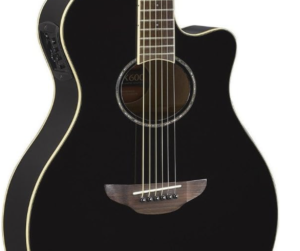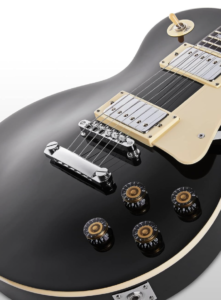For those looking to improve their guitar playing to new heights, mastering advanced guitar techniques is crucial. These skills not only enhance your sound but also expand your creative possibilities.
In this article, we’ll explore some of the most impactful advanced guitar techniques and how you can incorporate them into your practice routine. We’ll also reference some of our previous in-depth posts to help you further your understanding and improve your playing.
Mastering Advanced Chords and Progressions
 One of the fundamental ways to advance your guitar skills is by mastering complex chords and progressions. While basic chords form the foundation of most songs, advanced chords such as extended chords, altered chords, and inversions can add richness and complexity to your playing. If you’re new to this, start by reviewing Guitar Chords: Mastering from Basics to Advanced Techniques, which covers essential tips for building your chord vocabulary.
One of the fundamental ways to advance your guitar skills is by mastering complex chords and progressions. While basic chords form the foundation of most songs, advanced chords such as extended chords, altered chords, and inversions can add richness and complexity to your playing. If you’re new to this, start by reviewing Guitar Chords: Mastering from Basics to Advanced Techniques, which covers essential tips for building your chord vocabulary.
As you delve deeper into chord progressions, try experimenting with different voicings and movements. This can significantly improve your ability to create more dynamic and engaging music. You might also want to explore techniques like voice leading, where you smoothly transition between chords by focusing on the movement of individual notes within the chords. Understanding the Circle of Fifths is another excellent way to get comfortable with more complex progressions.
Tapping: Unlocking New Melodic Possibilities
Tapping is an essential technique for any guitarist looking to explore rapid, complex melodies. By using your picking hand to tap notes on the fretboard, you can play sequences that would be impossible to achieve with conventional picking alone. To get started or refine your tapping technique, check out our guide on Guitar Tapping Technique.
Incorporating tapping into your solos can add a new dimension to your playing, allowing you to explore fast, fluid runs with ease. Experiment with different tapping patterns, such as linear tapping or arpeggiated tapping, to expand your sonic palette.
Mastering Palm Muting for Rhythmic Precision
 Palm muting is a versatile technique that adds a percussive, rhythmic element to your playing. It’s especially useful in genres like rock and metal, where tight, controlled rhythm parts are essential. For a deep dive into this technique, refer to our article on Unlocking the Power of Palm Muting Guitar Technique.
Palm muting is a versatile technique that adds a percussive, rhythmic element to your playing. It’s especially useful in genres like rock and metal, where tight, controlled rhythm parts are essential. For a deep dive into this technique, refer to our article on Unlocking the Power of Palm Muting Guitar Technique.
To effectively use palm muting, practice with different levels of pressure and positions on the strings. This will help you achieve the perfect balance between muted and unmuted tones, giving you more control over your sound. Incorporating palm muting into your rhythm playing can also help you develop better timing and precision, making you a more versatile guitarist.
Exploring the Expressive Power of Bending
Bending is a fundamental technique that can add emotion and expressiveness to your solos. Whether you’re bending up to a target note or incorporating pre-bends, mastering this technique will allow you to play with greater feeling and nuance. For tips on how to improve your bending technique, take a look at our post on Guitar Bending Technique.
When practicing bending, focus on hitting the correct pitch consistently. You can start by bending notes a half step or whole step and then gradually work up to more complex bends. Combining bends with vibrato can also add a distinctive voice to your playing, making your solos stand out.
Using Looper Pedals for Practice and Performance
 Looper pedals are a powerful tool for guitarists looking to improve their timing, layering skills, and improvisation. By recording a loop of your playing, you can practice soloing over it, create multi-layered compositions, or develop new song ideas. If you’re new to loopers or looking for the best options, check out our guide to the 7 Best Looper Pedals for Guitar.
Looper pedals are a powerful tool for guitarists looking to improve their timing, layering skills, and improvisation. By recording a loop of your playing, you can practice soloing over it, create multi-layered compositions, or develop new song ideas. If you’re new to loopers or looking for the best options, check out our guide to the 7 Best Looper Pedals for Guitar.
Incorporating a looper into your practice routine can help you build complex arrangements and improve your overall musicianship. Whether you’re working on rhythm parts, soloing, or song structure, looper pedals are an invaluable asset to any guitarist’s toolkit.
Expanding Your Sonic Palette with Multi-Effects Pedals
Multi-effects pedals offer a wide range of effects in a single unit, allowing you to experiment with different sounds and tones without the need for multiple individual pedals. This can be especially useful when exploring advanced guitar techniques, as it gives you the ability to quickly switch between different effects and settings.
If you’re in the market for a versatile multi-effects pedal, our review of the Best Multi-Effects Pedals for Guitar provides a comprehensive overview of the top options available. Using multi-effects pedals can help you explore new soundscapes and find the perfect tone for your playing style.
Conclusion
Improving your guitar skills requires dedication, practice, and a willingness to explore new techniques. Whether you’re mastering advanced chords, experimenting with tapping, refining your palm muting, or enhancing your sound with effects pedals, there’s always something new to learn and incorporate into your playing. For more insights and tips, be sure to explore our other articles on mastering guitar tone and expression techniques to further develop your skills.
Keep pushing your boundaries, and remember that the journey of a guitarist is one of continuous growth and discovery. Happy playing!
